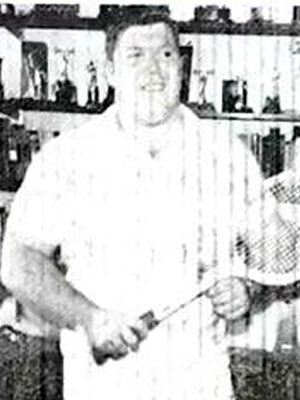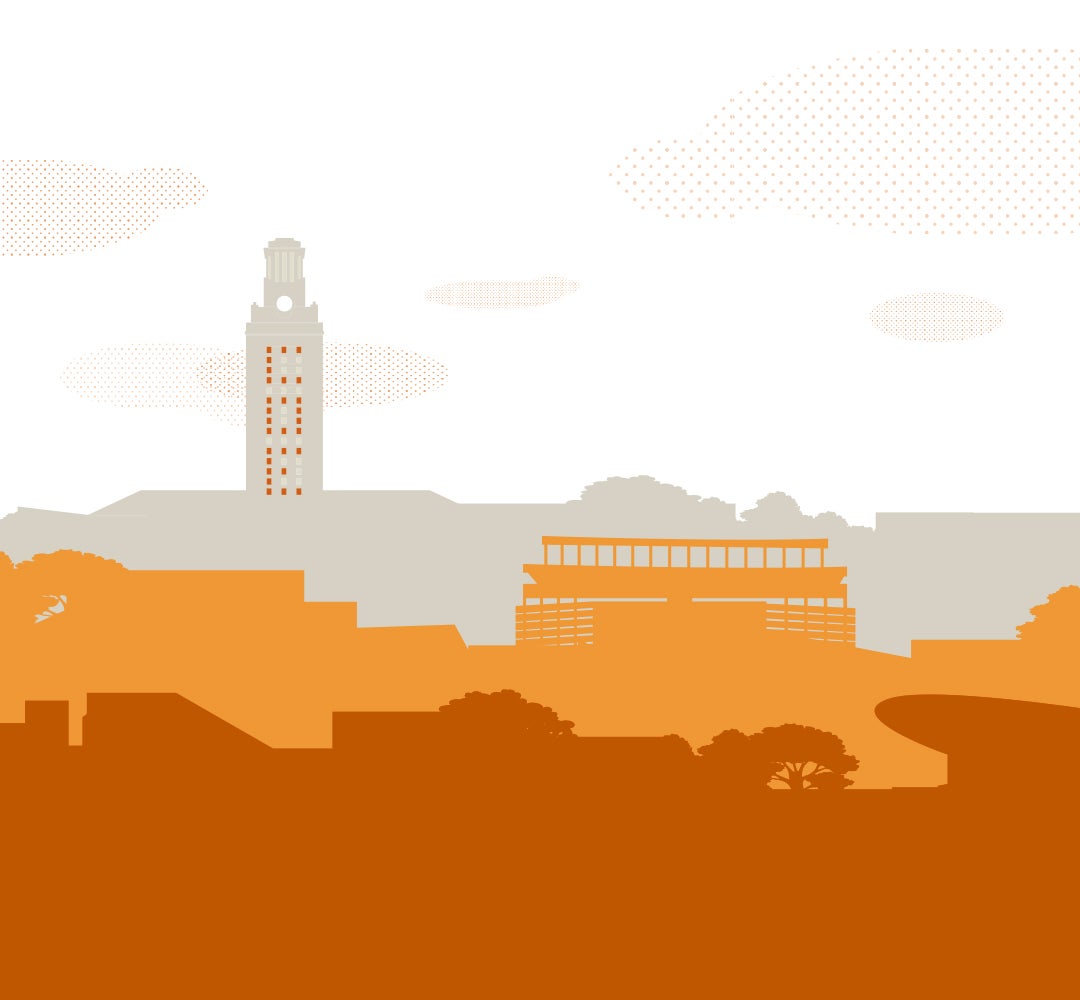A Tribute to Terry Todd, Ph.D.
January 1, 1938—July 7, 2018
Terry Todd was a writer, academic, journalist, champion lifter, coach, sport promoter, director of the Arnold Strongman Classic, and founder, with his wife, Jan Todd, of the H.J. Lutcher Stark Center for Physical Culture and Sports at the University of Texas at Austin.
Todd died in Austin on July 7, 2018. He is survived by his wife, Jan; his sister Connie Todd; his nephew Timothy Todd Ray and wife Sheri Graner-Ray; and his “adopted” son, Mark Henry, wife Jana Perry Henry, and their children, Jacob and Joanna.
In his lifetime, Todd reshaped nearly all aspects of the field of strength training and was recognized internationally for his work. He brought the study of strength into academic respectability and particularly helped create the modern sport of Strongman.
He was involved in the birth and development of both men’s and women’s powerlifting. He personally coached two of the strongest men in history—Bill Kazmaier and Mark Henry—and Jan Todd, a pioneer in women’s powerlifting.
Todd was famous for his encyclopedic knowledge of strength history and his richly detailed and humorous stories. Todd also played a particularly important role in debunking the belief that lifting weights would make one “musclebound.”
Cultivating a Love for Sports
Todd began life in the Beaumont, Texas, as the First New Years’ Baby for 1938, an achievement that also marked his first appearance in the newspaper. Although the Todds are an old South Austin family, his father, B.C. Todd, and mother, Ima Williams Todd, were then living in Beaumont where his father was founder and owner of KOLE radio in nearby Port Arthur. Terry and his younger sister, Connie, appeared on their father’s radio station during their early childhood in a show called “Uncle Dan, The Funny Man,” in which their father read the Sunday comics while Terry and his sister commented.
The family moved back to Austin in 1946. Todd attended Austin public schools, was a stand-out Little League and Pony League baseball player, was a three-time winner of the city-wide Cheerio-Top Yo-Yo Competition, and in high school won several Austin table tennis championships.

Todd’s first serious sport was tennis, which he learned from his father and on the public courts at Little Stacy Park in South Austin. He played varsity tennis at Travis High School, and was a Letterman in tennis at The University of Texas under Coach Wilmer Allison.
After graduating from high school in 1956 Todd began weight training—at first simply to make his left arm as large as his dominant tennis arm. As his interest grew in the capacity of weight training to build strength and muscle, he began full-body training and was soon playing varsity tennis weighing as much as 235 pounds.
Coach Allison, like most coaches in the 1950s, warned Todd that lifting would hurt his tennis game and make him musclebound. Todd intuitively knew then—and thousands of coaches know today—that was simply not true. Todd finally gave up his scholarship rather than continue to hear about his body weight, and he decided to explore his strength potential.
After receiving his B.A. in English from UT-Austin in 1961, Todd began working on a doctorate in the interdisciplinary program, History and Philosophy of Education, and used his graduate years as a time to weight train seriously. By 1963, when he won his first major title—the AAU Junior National Weightlifting Championships—he weighed 300 pounds.
He then turned to powerlifting and won the first men’s national championships in 1964, and in 1965, the first official Senior Nationals in the sport. Todd was the first man to squat 700 pounds and the first man to total 1600, 1700, 1800, and 1900 pounds in powerlifting. He set numerous American records, and his best official lifts were a 720-pound squat, 515-pound bench press, and a 742-pound deadlift.
Todd retired from competition in 1967 and reduced his bodyweight by returning to tennis, which he played for many more years.
Life as an Academic
In the mid-1960s, while working on his Ph.D., he moved to York, Pennsylvania, and worked as managing editor of Strength & Health magazine. Todd received his doctorate from the University of Texas in 1966, writing one of the first historical dissertations on the subject of resistance training.
Following graduation he began his academic career at Auburn University before and then moved to Mercer University in Macon, Georgia, in 1969.
During this early phase of his career, Todd’s academic focus was not on sport or strength training, but rather on the problems faced by America’s schools. At Mercer, he founded the African-American Studies program in 1969, and ran a series of summer seminars that brought together major intellectuals working to solve the problems of American schools in the 1970s. Educational theorists John Holt, James Herndon, and Edgar Friedenberg became life-long friends.
In 1973, when Todd married Janice (Jan) Suffolk, Herndon served as best man at their wedding. Friedenberg, then a main reviewer for the New York Review of Books and perhaps the most important public intellectual in the school reform movement of the early 1970s, played the pivotal role in Todd’s joining the faculty at Dalhousie University in Halifax, Nova Scotia, in 1975.
Honing His Expertise on Strength
In Nova Scotia, Todd’s interest in strength and powerlifting became more central to his academic focus in part because Jan Todd was setting world records in powerlifting. In 1977, after Sports Illustrated (SI) profiled Jan Todd in an article, The Pleasure of Being the World’s Strongest Woman, the Todds were invited to New York to make several TV appearances and visit the SI offices.
That visit resulted in an assignment from SI for Todd to write an article about champion arm wrestler Al Turner. Once completed, more assignments for SI followed. Among the most notable are his 1982 profile of Herschel Walker, “My Body’s Like an Army,” that Atlanta mayor Andrew Young arranged to distribute to thousands of Atlanta school children. His 1981 article on pro wrestler Andre the Giant was discussed in the 2018 HBO documentary “Andre the Giant,” in which Todd also appears. Todd’s 1983 “The Steroid Predicament” is regarded as one of most influential articles on doping and sport of the 1980s. During his lifetime, Todd authored more than 500 articles in scholarly and popular magazines. He and Jan also began the important academic journal, Iron Game History: The Journal of Physical Culture in 1990. They have edited it for the past 28 years.
Todd authored or co-authored seven books including “Philosophical Considerations of Physical Strength” (2010 with Mark Holowchak), Herschel Walker’s “Basic Training” (1985 and 1989 with Herschel Walker), “Lift Your Way to Youthful Fitness” (1985 with Jan Todd), “Inside Powerlifting”—the first book on the sport of powerlifting (1978), and “Fitness for Athletes” (1978). His final book, “Strength Coaching in America: A History of the Most Important Sport Innovation of the Twentieth Century” (with Jason Shurley and Jan Todd) will be published in 2019.
In 1979, Todd returned to Auburn, where he established the National Strength Research Center at Auburn University, a training facility in which top-level strength athletes like Kazmaier, Lamar Gant, and Jan interacted with exercise scientists to help advance strength science.
As his reputation as an expert on strength grew, Todd was often asked to do color commentary on TV and worked for several years as a consultant on strength sports for CBS television. Todd was also involved with the early TWI Worlds’ Strongest Man Competitions both as a broadcaster and as a strength expert, and, in 1980, 1981, and 1982 he promoted his own Strongest Man in Football television shows.
A Collection Leads to a World-Renowned Center
The Todds moved back to Austin in 1983 where he joined the faculty of the Department of Kinesiology and Health Education at The University of Texas. With them came more than 300 boxes of books, photographs, magazines, and other materials related to strength training and physical culture.
Todd had realized when writing his dissertation that many academic libraries had little information about strength training, bodybuilding, and weightlifting, and so he and his wife began collecting such materials with the dream of one day establishing an academic library for the strength sports.
The Todds realized that dream in 2009 when they moved what had grown to more than 3,000 boxes and many pieces of art into the now internationally famous H.J. Lutcher Stark Center for Physical Culture and Sports located in the North End Zone of UT-Austin’s Texas Memorial Stadium.
Now visited by scholars from around the world, the Stark Center has changed our understanding of what belongs within the field of sport history. The Center is a repository for the large collections of physical culture and sport materials donated by the Todds, UT Athletics, and many other donors. It is also recognized as an Olympic Study Center by the International Olympic Committee.
The Stark Center was yet another of Todd’s visionary ideas and he served as the center’s primary fundraiser. Todd was actively working toward an endowment goal of $10 million needed to ensure the center’s future when he passed.
Arnold Strongman Classic
In 2001, Todd was asked by Arnold Schwarzenegger and his partner, Jim Lorimer, to create a strongman contest for the Arnold Sports Festival, held annually in Columbus, Ohio. Now recognized as the most prestigious contest in the strongman sport, the Arnold Strongman Classic Todd created has transformed the sport itself. Todd prided himself on offering the highest prize money in the sport and in creating events for the Arnold that measure true strength and not endurance.
Creating and running the Arnold Strongman Classic not only kept Todd at the forefront of the Iron Game but also led to new opportunities for Todd to unite history and strength in a series of documentary films for which he served as producer. Sponsored by barbell and equipment manufacturer Rogue Fitness of Columbus Ohio, the documentaries are available free on Rogue’s Facebook page and include Levantadores, about Basque rural sports and stone lifting in Northern Spain; Stoneland, exploring the strength traditions of Scotland; a new 90-minute film on Iceland’s strength traditions that will premier this summer, and biographies of strongman Eugen Sandow and Louis Uni.
A Legacy That Will Endure
Todd’s is an unmatched legacy in the history of the Iron Game. He was inducted into the International Sports Hall of Fame in 2018; received the National Strength and Conditioning Association’s highest honor—the Al Roy Award—in 2017; was honored as a Legend by the Collegiate Strength and Conditioning Coaches Association in 2009; has been inducted into both the men’s and women’s powerlifting halls of fame; and, in 2013, received the Honor Award of the North American Society for Sport History for his contributions to that academic field.
Most importantly, he was a friend to many.
“Terry brought a tremendous intellect and insatiable curiosity to the study of strength,” says John Bartholomew, chair of the Department of Kinesiology and Health Education. “As a result, he did more than anyone to change how we think about strength training and the people who commit their lives that training. The University of Texas played an important role in this work. It nurtured his early development as a scholar and athlete and is where he worked with his wife, Jan, to establish the Stark Center for Physical Culture Sport, which reflects his life-long devotion and will be a lasting legacy.”
“Terry was a great visionary who cared deeply about his friends and family. He and Jan shared a devotion to each other, to strength sports and history, and to the Stark Center,” says Associate Professor Thomas Hunt, a KHE colleague. “For all of his accomplishments in so many areas, I’ll most miss just spending time with him. He was an extraordinary person.”
Said another long-time friend when they learned of his passing, “It may seem that our world is a bit weaker today but actually we are all immeasurably and eternally stronger for having known him.”


